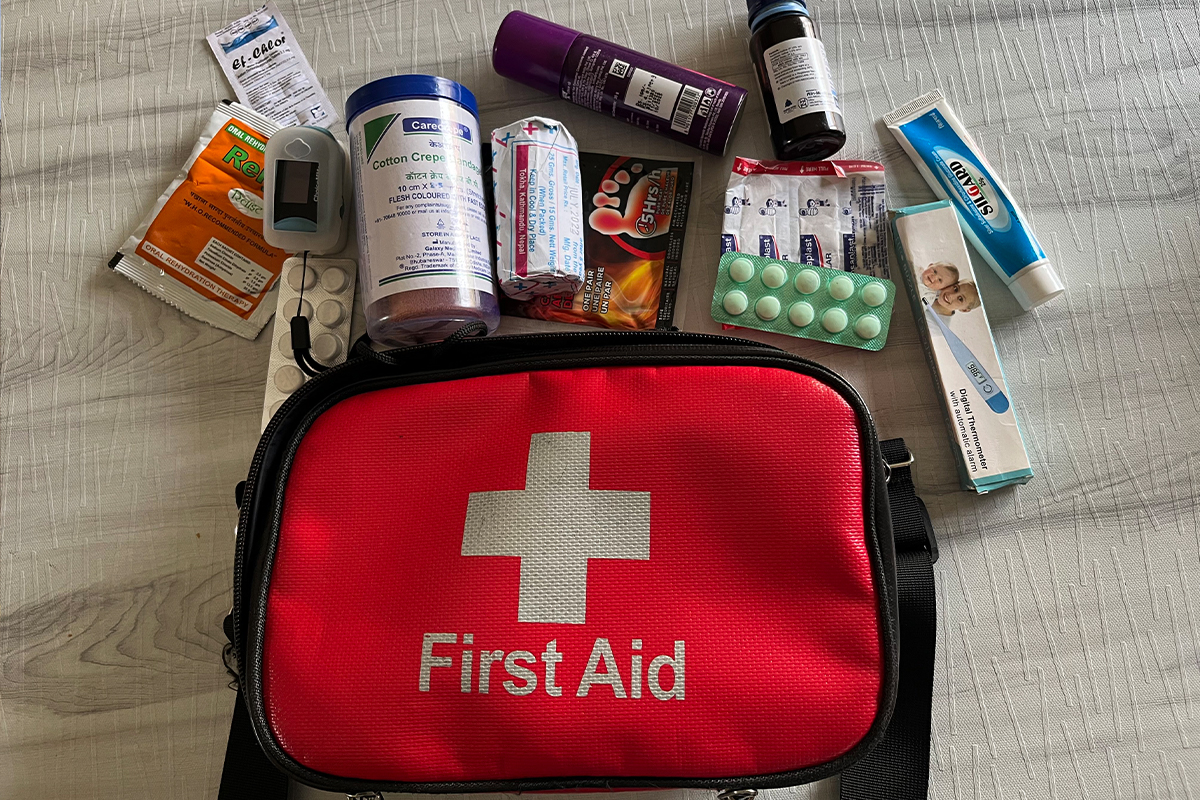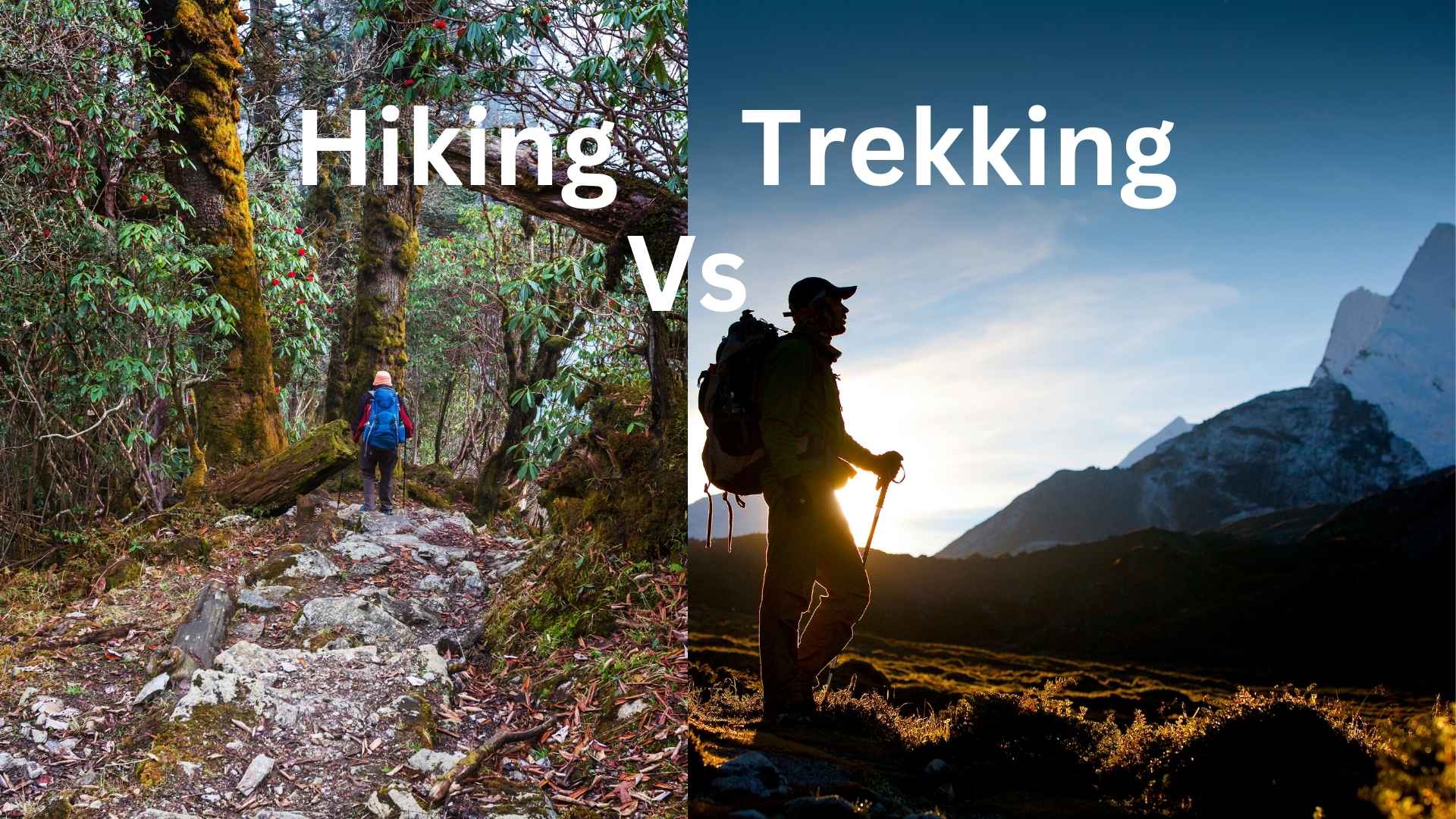What Exactly Is Trekking?
Trekking is more than just walking; it's a complete journey to long-distance routes and remote terrains. It involves crossing rugged landscapes, steep inclines, and sometimes even harsh weather conditions. On the other hand, a casual, easy walk in the park hardly meets these standards.
This is about testing your physical and mental endurance. Every step pushes the limits of your body and mind, and each passing day brings new challenges. You might be trekking on high-altitude mountain paths or going through thick forests. It involves continuous exertion with stamina, strength, and mental focus.

Trekking Destinations: Where and Why?
Where?
- Everest Base Camp
- Annapurna Circuit
- Langtang Valley
- Manaslu Circuit
- Ghorepani Poon Hill
- Mardi Himal Trek
- Upper Mustang
- Kanchenjunga Base Camp
- Rara Lake Trek
- Dolpo Region (Shey Phoksundo Lake)
Why?
- This makes trekking in Nepal a must for mountain lovers, as it offers unparalleled iconic views of Everest, Annapurna, and Kanchenjunga.
- Experience the varied cultures of the villages, from Sherpas around the Everest region to the Tibetan-influenced communities within the Mustang and Manaslu regions.
- The varied terrains-from lush forests to high-altitude deserts-offer different experiences on each trek.
- It challenges physical limitations because of steep inclines, high altitudes, and multi-day trekking across rugged terrain.
- Some of these routes are less crowded and ideal for those who want solitude away from busy tourist spots.
- Trekking routes in Nepal run amidst attractive natural landscapes, such as serene lakes, glaciers, and various species of wildlife, improving the outdoor experience.
Recommendation Read: Top Autumn Trekking Routes in Nepal
Must-have items for longer treks
Backpack
Sleeping bag
Trekking poles
Layered clothing
Sturdy boots
Water purification system
Headlamp
First aid kit

Top Trekking And Hiking Gear Shops In Nepal
[H2] What Defines Hiking?
The hikes are normally on well-marked, easy trails that hardly require much training or preparation. The paths are often light and easy to handle, even for a novice outdoorsman or woman who just wants an easygoing outdoor activity. These hikes are ideal for spending a few hours outdoors without too much stamina exertion.
The point of hiking is to enjoy the beauty of nature around you. Without feeling rushed, like on longer hikes, you can experience this at a slower pace- the serene forest, the beautiful meadow, or the view from high above a mountain. It is more about the journey and the connection with nature than the destination.

[H3] Hiking Destinations: Where and Why?
Where?
- National parks and local nature reserves: Chitwan National Park, Bardia National Park
- Forest trails and coastal paths: Shivapuri National Park, Godawari Forest
- Mountain foothills and hillsides: Nagarkot, Dhulikhel, Pokhara Valley
- Lakesides and riverbanks: Phewa Lake in Pokhara, Rara Lake, Begnas Lake
- Urban trails and city parks: Sundarijal, Valley Rim Trails near Kathmandu
Hiking Near Kathmandu
Why?
- It provides quick access to nature, often at one's doorstep, and is an ideal weekend getaway.
- The trails are normally well-marked and maintained, making them ideal for beginners and families.
- Scenic beauty provides bird-watching, viewing of wildlife, and photo opportunities.
- Fitness levels: easy walks to slight inclines are involved.
- Ideal for stress relief: hiking provides the opportunity to have time out in nature without interruptions.
- Suitable for a family outing: all the family members can share in the adventure of being outdoors.
[H3] Essentials for a day hike
- Comfortable daypack
- Water and snacks
- Weather-appropriate clothing
- Proper footwear
- Sunscreen and sunglasses
- First aid kit
- Map or compass
[H2] Similarities of Hiking and Trekking
- Connection with Nature: Hiking and trekking allow the individual to be in nature. It's a chance to break away from daily life and appreciate the beauty outside. From a short hike to a longer trek, the activities enable one to feel peace and well-being through the connection with the environment.
- Outdoor Adventure: Both offer the view of an adventure, either locally or in a mountain range far from civilization. Equally exciting, they introduce one to new and unknown terrains.
- Physical Exercise: Both hiking and trekking are perfect aerobic exercises. They build stamina, strength, and endurance in the body, hence offering good physical health. Although trekking may be more intense, both are very engaging to the body and help keep fit.
- Mental Health Benefits: Whether you're going on a short hike or a multi-day trek, both contribute to good mental health. The outdoors helps reduce stress and enhances one's mood and mental clarity, as both the acts of hiking and trekking encourage mindfulness and a focus on the present.
- Sense of Achievement: Anyone who hikes or treks, irrespective of the distance covered, gains a sense of achievement. Ultimately, one may feel proud of his or her accomplishment at a beautiful viewpoint, a summit, or just the completion of a trail.
- Requires proper gear: Even though the gear might be different in size and complexity, hiking and trekking require proper clothes and equipment to ensure the participants' comfort and safety. Proper footwear, water, and weather-appropriate gear are also necessary for both.
Benefits of Hiking and Trekking
- Improved physical health
- Mental clarity and stress relief
- Weight loss and fitness
- Stronger immune system
- Enhanced social connections
- Personal growth and confidence
- Exposure to nature and wildlife
[H2] Differences in equipment for trekking compared to hiking
- Size of Backpack: Trekking backpacks are more significant and accommodate gear for a long time, whereas hiking backpacks are much smaller in preparation for day trips.
- Footwear: Hiking boots are more resistant and designed for rough, uneven terrain, while hiking shoes for easier paths are lighter and more flexible.
- Clothing layers: In trekking, layering is crucial in high altitudes and unpredictable weather conditions; at lower altitudes, people hike with less layering.
- Trekking poles: More requisite in trekking, where the ground might get tougher, compared to mere hiking, which may not necessitate the use of poles that often.
- Sleeping: Trekking usually includes equipment such as a sleeping bag and tent, while in hiking, one returns to a shelter base camp at the end of the day.
Trekking vs Hiking: Key Differences You Should Know
1. Duration and Intensity
Trekking is generally a serious outdoor undertaking that may last days, weeks, or even months because of the long time and heavy effort required to overcome the usually remote and difficult terrain. Great bodily endurance is required.
Hiking is a shorter, day-long trip or less that can be easier physically. It allows you to enjoy nature and get some exercise without the same level of exhaustion or time commitment, making it a more accessible option for those who are looking for a lighter outdoor adventure.
2. Terrain and Difficulty
Generally speaking, hiking paths are more accessible and better maintained. Trekking usually involves a lot of rugged and challenging terrain, such as high altitude, steep ascents, or rough trails with harsh weather conditions, where careful navigation, skills, and stamina are needed at higher levels. This is why trekking is suitable only for those in search of an outdoor challenge.
While some hiking trails may go uphill or involve rocky territory, they are generally more manageable. They involve less technical skill and preparation, making treks perfect for people at all fitness levels.
3. Time Commitment and Planning
When thinking about trekking, preparation is one very important element that comes to mind. These multi-day treks require a great deal of planning: route research, issuing permits, long-duration packing, and sometimes even transport or accommodation organization. Because trekking takes so long and can be unpredictable, it requires much planning to stay safe and comfortable.
On the other hand, hiking is significantly less complex in terms of planning. Most day-long treks require little more than checking the weather and basic provisions like water, snacks, and decent footwear. Because hiking requires so much less commitment, it is often spontaneous and involves little preparation.
4. Physical Preparation and Fitness Level
Because of its more rigorous nature, trekking requires far greater physical fitness. In addition, land ruggedness and potential differences in elevation require a person to be more prepared and in decent physical condition. Many trekkers train several months before a trek to develop their endurance and muscle strength.
Hiking is much less strenuous; although the average hike may still require a respectable fitness level, it doesn't usually require special training or preparation. Most people can enjoy hiking without much conditioning, making it more accessible to the general public.
Read Our Bolg,Fitness For Everest Base Camp Trek
5. Required Equipment and Packing
Due to trekking's multi-day nature, the equipment is usually more specialized and heavier. This includes all camping gear, such as tents, sleeping bags, cooking gear, and multiple layers of clothes in case of different weather conditions. This equipment must be more durable to withstand harsher environments.
The gear for hiking, however, is much lighter and simpler. A daypack with water, snacks, a map, and proper footwear usually suffices on most hikes. The difference in time commitments and terrain can be seen in the amount and type of gear used for the two activities.
Packing List For Annapurna Base Camp Trek
Which One Should You Choose?
- Consider Your Fitness Level: Hiking may suit you best if you are entering the outdoors or want a less tiring activity. Trekking can be even more overwhelming to people who want a physical challenge coupled with an adventure.
- Time Availability: When one has little time, it is ideal to go on short day trips for hikes. If one is prepared to invest a significant amount of time and is ready for a commitment to multi-day adventures, then trekking is it.
- Desired Experience: Hiking is a perfect option for those looking for a peaceful, scenic walk with less fussiness in terms of planning. Those seeking a more immersive, rugged adventure navigating remote terrains will find a deeper experience in trekking.
- Gear and Preparation: Hiking requires minimal gear, which allows most people to enjoy the experience without any hassle. Trekking requires rather specialized gear and preparation, so it's more for people who enjoy planning in detail and preparing themselves for the elements.
- Adventure Level: If you seek more adventure, trekking will take you to off-the-beaten-path destinations. Hiking is great for enjoying nature on a more accessible and less intense level.
Conclusion
Ultimately, whether it is an easy hike or a more challenging trek, you will want to know the differences to choose the best adventure to meet your needs. Whatever the case, Footprint Adventure can provide both experiences in as memorable a way as possible, considering your comfort zone and adventure level. Whichever path you choose, Footprint Adventure will guide you through an unforgettable outdoor experience.
FAQs
What’s the main difference between trekking and hiking?
Trekking generally covers long, multiday travels in difficult areas like mountains or faraway places. It requires a higher level of physical fitness. Hiking can be defined as shorter, easier walks that are more accessible to any person, normally in local parks or nature reserves. It is less physically demanding. Basic differences are duration, intensity, and preparation that separate one from the other.
Do I need special training for trekking?
Yes, trekking requires a better level of physical fitness than hiking. It demands endurance for longer distances and elevation gains over rougher terrain. Many trekkers prepare by taking strength and stamina-building exercises together with some practice in walking with a heavy backpack to simulate the conditions during a trek.
Can I go hiking in any weather?
While hiking can be done in most weather conditions, safety is paramount. One must always check forecasts and be prepared for changes. It is always wise to avoid hiking in heavy rain, snow, or thunderstorms. It is highly recommended that one postpone or change one's plans on less ambitious routes with proper equipment and extra layers.
What kind of gear do I need for trekking?
This includes special equipment, such as tough shoes, backpacks, tents, sleeping bags, and cooking utensils for many-day treks. Clothing also needs to match the weather conditions. Hiking equipment is lighter and less complicated, involving mainly comfortable shoes, a daypack, and snacks for lighter trips.
Is trekking suitable for beginners?
Trekking is difficult for beginners because of the prolonged and exigent journeys that need to be covered. Still, beginners who initiate outdoor adventures can conveniently undertake some easy treks. One should build experience and start with shorter treks, gradually exploring routes that may be more difficult.






